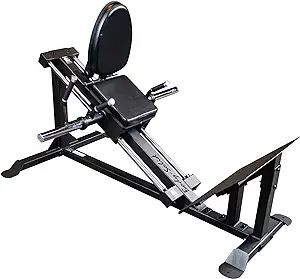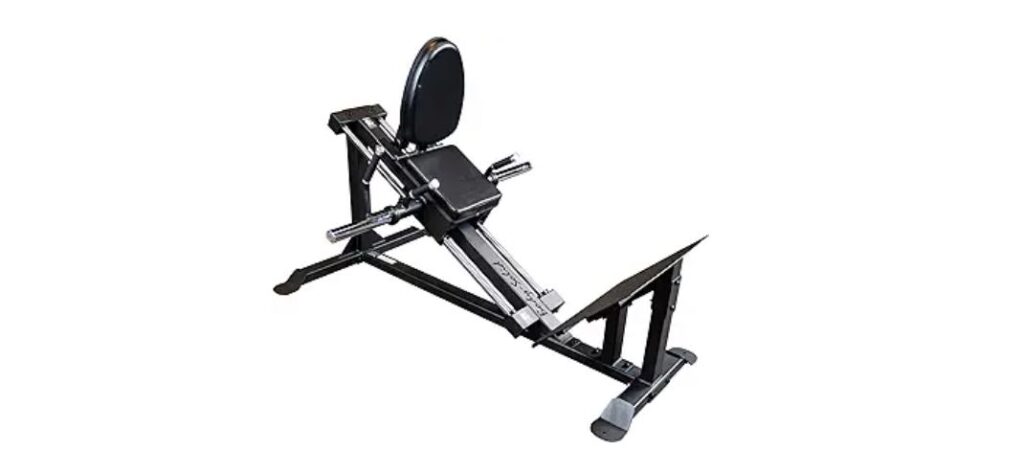How to Do the Leg Press:
Amongst all exercises that contribute to strength training for developing lower body muscles, the leg press holds a special position. This machine-based exercise allows individuals to work out by pushing the weights with their legs in an enclosed environment. In this respect, this equipment should be included in most of your workout routines. In the article below, we’ll show you the benefits of the leg press, proper technique, and variations, safety tips, and how it fits into a comprehensive leg training program.
Benefits of the Leg Press:
Muscle Development: During the performance of the leg press, it gives much focus on quadriceps, hamstrings, and gluteus maximus. Since it allows heavy loading, the chance for hypertrophy or growth of muscles is increased in these important muscle groups for overall strong legs.

Joint Stability:
In strengthening the muscles around the knee joint, the leg press increases its joint stability, hence decreasing its susceptibility to injury in performing daily activities and during sports.
Isolating Muscle Groups:
Unlike squats, which are basically compound movements, the leg press is an exercise that can give one more isolation to the leg muscles. This can be very helpful in the case of persons recovering from injuries or for those who, due to one problem or another with their mobility, cannot perform the squat correctly or are unable to carry it out altogether.
Variability of Training:
Variations in placing and angles of the feet on the leg press machine allow users to emphasize different muscle groups. For example, while standing wider targets the inner thighs, a narrow stance focuses on quadriceps.
Reduced Stress on the Spine:
The leg press can be a safer alternative for those who have problems with their backs or even find squats too stressful. Because the position is more supported, it is effective in training the legs without overstressing the lower back.
Proper technique:
In any form of weight training, there is always a need to apply proper technique to maximize efficiency and reduce the risk of injury. Here’s a step-by-step guide:
Adjust the Machine:
First, always adjust the seat so that your back is in support, and the knees are in line with the pivot point of the machine. Your feet should lie flat and comfortably on the platform.
Placement of Feet:
Place feet shoulder-width apart onto the platform. The toes, if needed for comfort, can be pointed slightly outward. Make sure to keep your heels as flat as possible to the platform.
Starting Position:
The first step involves adjusting your knees to approximately a 90-degree bend, with the weight not resting on the legs. One must remember to hold one’s core and neutral spine throughout the entire range of motion.
Press Phase:
Slowly extend the legs and press the platform away. Maintain control throughout the movement, avoiding locking at the top of the knee. Remember to drive through your heels in moving the weight.
Return Phase:
Slowly return the platform to the starting position, using control and avoiding any bouncing or jerking. Stop when your knees are again at about 90-degree angle.
Breathing:
Exhale during the extension of pushing the weight away from you; inhale returning to the starting position.
Leg Press Variations:
In an attempt to keep things fresh and targeting different muscle groups, here is a list of leg press variations that could be applied:
Single-Leg Press:
This makes the execution of a leg press a little challenging because one leg is working; it also can help even out imbalances in the muscles.
Wide Stance Leg Press:
The feet are placed wider on the platform to put greater emphasis on the inner thighs and glutes.
Narrow Stance Leg Press:
The feet are to be closer to emphasize the quadriceps.
Feet-Elevated Leg Press:
Elevating your feet on the platform will increase the range of motion and enhance the stretch of the hamstrings and glutes.
Reverse Leg Press:
Some machines will allow for a reverse leg press that can slightly alter the emphasis placed on the hamstrings and provide a new stimulus for muscle growth.
Safety Tips:
While the leg press may be a rather safe and effective exercise, there are a few precautions to make sure injuries can be avoided:
Warm-up:
Never begin heavy lifting without first warming up. Dynamic stretches and light cardio are considered the best option for heating the blood in the muscles.
Start with Light Weights:
In case one is a beginner, he/she starts with light weights as he/she masters the technique, then goes on to increase the load.
Position of the Knees:
Keep your knees in a position not extending over your toes during the pressing action; this minimizes the stress exerted through the joints.
Avoid Locking Out Knees:
Never completely lock your knees at the top of the movement. Doing this can lead to joint injuries and greatly reduce the effectiveness of the exercise.
Use Spotters:
If choosing to lift heavy weights, it might be a good idea to bring a workout partner or trainer to help when things go awry.
Listen to your body:
if you are in pain, not to be confused with muscle fatigue, or discomfort you should stop the exercise and either review form or weight.
Incorporating the Leg Press into Your Routine
Meanwhile, the leg press can be comfortably fit into an overall leg workout program. It can be a primary compound movement for your leg day, done at the very forefront, or possibly a secondary movement done right after squats or deadlifts. Do 3-4 sets of 8-12 repetitions and adjust the weight according to your desired fitness level and goals.
Conclusion:
In other words, the leg press is multi-functional and effective during lower body strength building. Acquiring proper technique, exploring its variations, and prioritizing safety are some of the ways to harness the full benefits of this essential strength training exercise.

